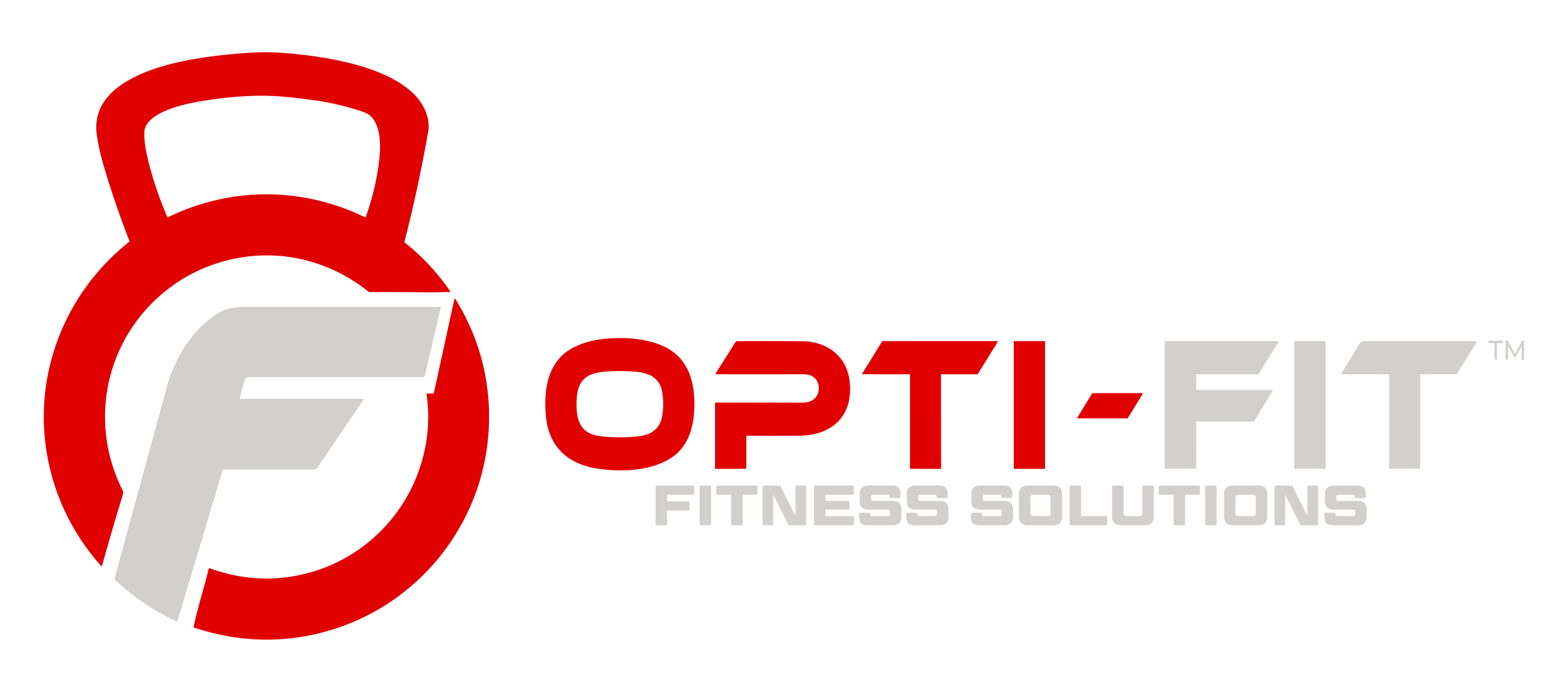At Opti-Fit, we understand that exceptional fitness centers go beyond mere visual appeal. A strategically designed fitness center layout is crucial for crafting an outstanding user experience, enhancing member satisfaction, and fostering long-term engagement.
Our approach to advanced design principles focuses on the member journey and optimal space utilization, ensuring your fitness center not only looks inviting but also functions seamlessly.
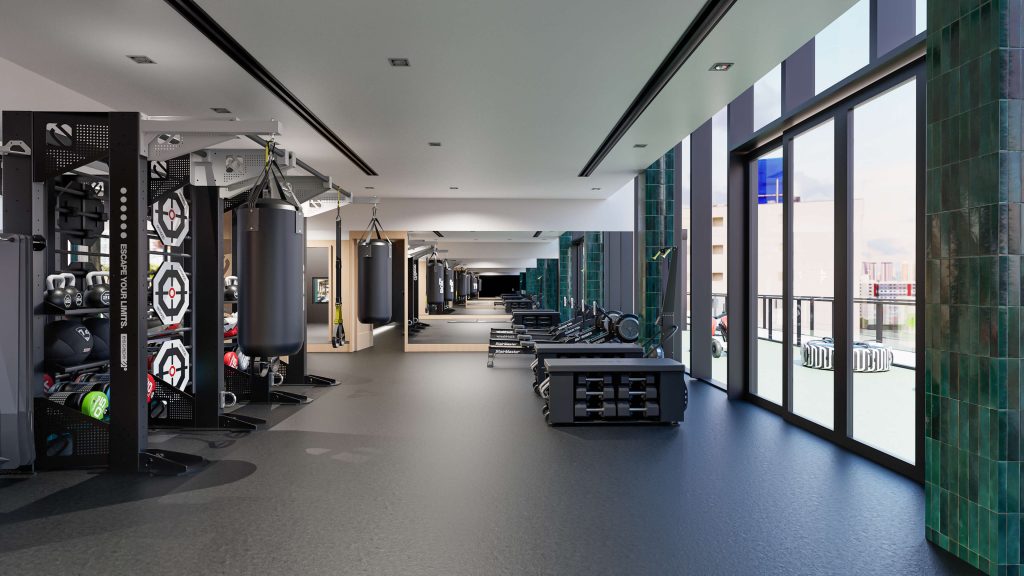
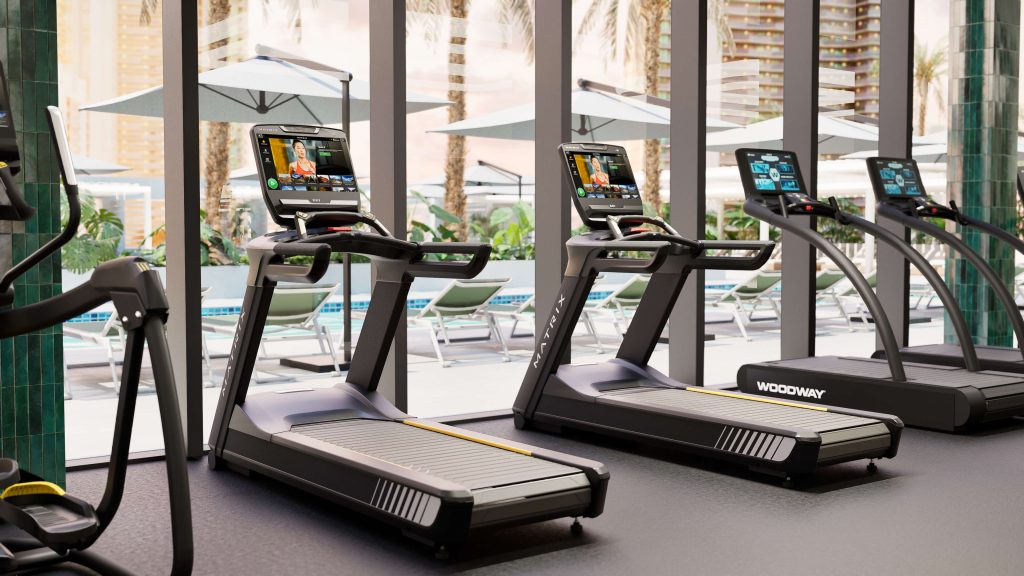
Key Considerations for Strategic Fitness Center Layout:
- Intuitive Flow and Zoning:
- Create clear pathways and distinct zones for different training modalities (cardio, strength, functional training, group fitness).
- Guide members effortlessly through the space, minimizing confusion and maximizing workout efficiency.
- Incorporate buffer zones to prevent overcrowding and maintain a comfortable training environment.
- Building a Sense of Community:
- Design dedicated social zones, like a lounge area or a stretching space with a view, to encourage interaction among members.
- A well-designed layout can make members feel more connected, which is a key driver for retention and loyalty.
- Programmed Focus Integration:
- Designated areas tailored for specific training programs (e.g., HIIT zones, dedicated free weight areas, stretching and recovery spaces).
- Optimize equipment placement within these zones to support effective workouts and program delivery.
- Consider sightlines to create visually engaging and motivating environments that cater to various training styles.
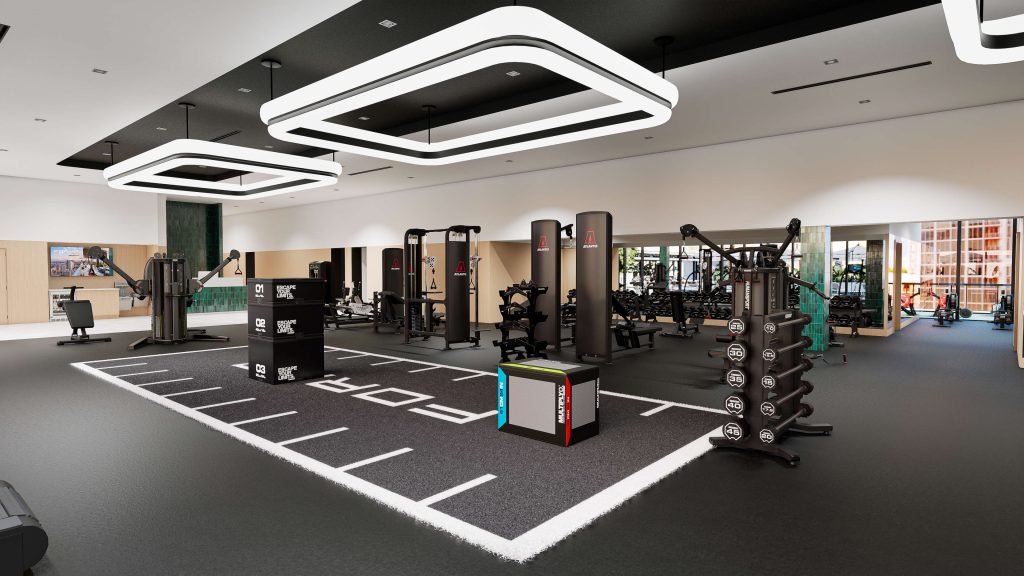
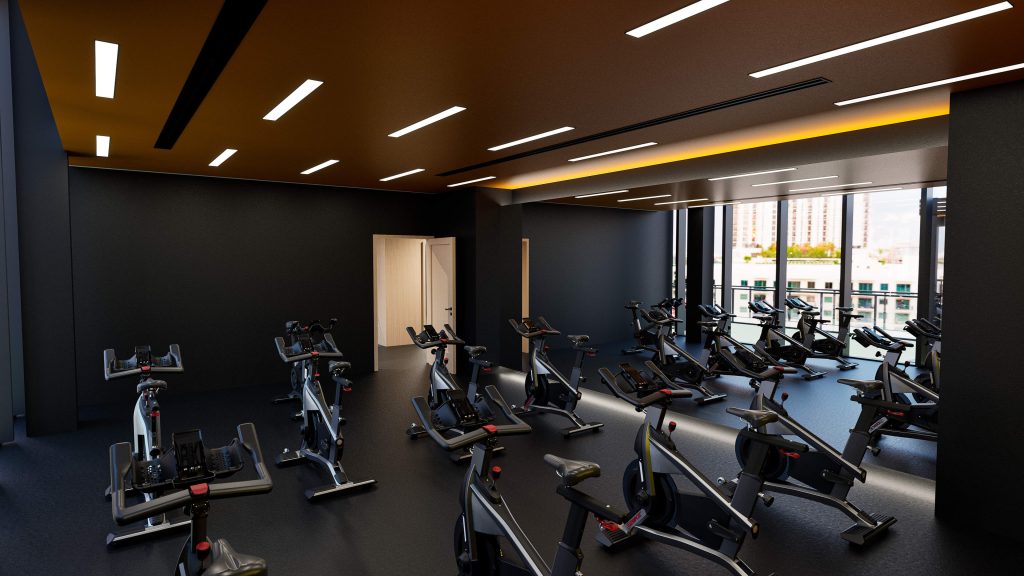
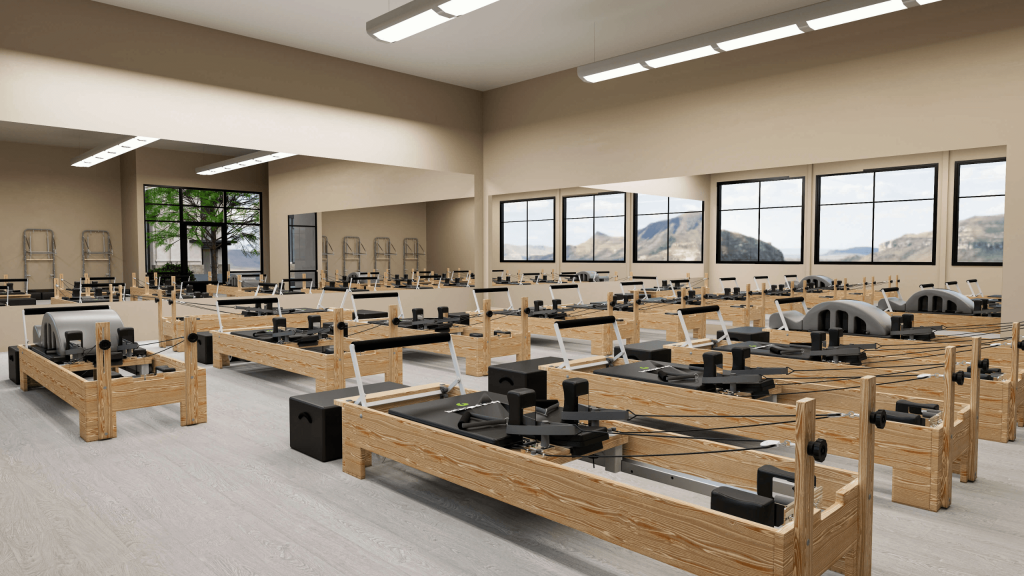
- Maximizing Space Efficiency:
- Strategic equipment placement to avoid bottlenecks and ensure ample workout space around each machine.
- Utilization of multi-functional equipment to cater to diverse fitness needs within a compact footprint.
- Thoughtful placement of storage solutions to maintain a clean and organized environment.
- Enhancing User Experience:
- Creating a welcoming and motivating atmosphere through thoughtful design elements and spatial arrangement.
- Ensuring adequate lighting and ventilation throughout the facility.
- Strategically placed water fountains, towel stations, and other amenities for member convenience.
- Integrating Outdoor Fitness Spaces:
- Seamless transition between indoor and outdoor training areas (if applicable).
- Design outdoor spaces for functional training, bodyweight exercises, or group fitness classes.
- Consider weather protection and durable equipment suitable for outdoor use.
- Create an appealing and accessible outdoor fitness experience that complements the indoor offerings.
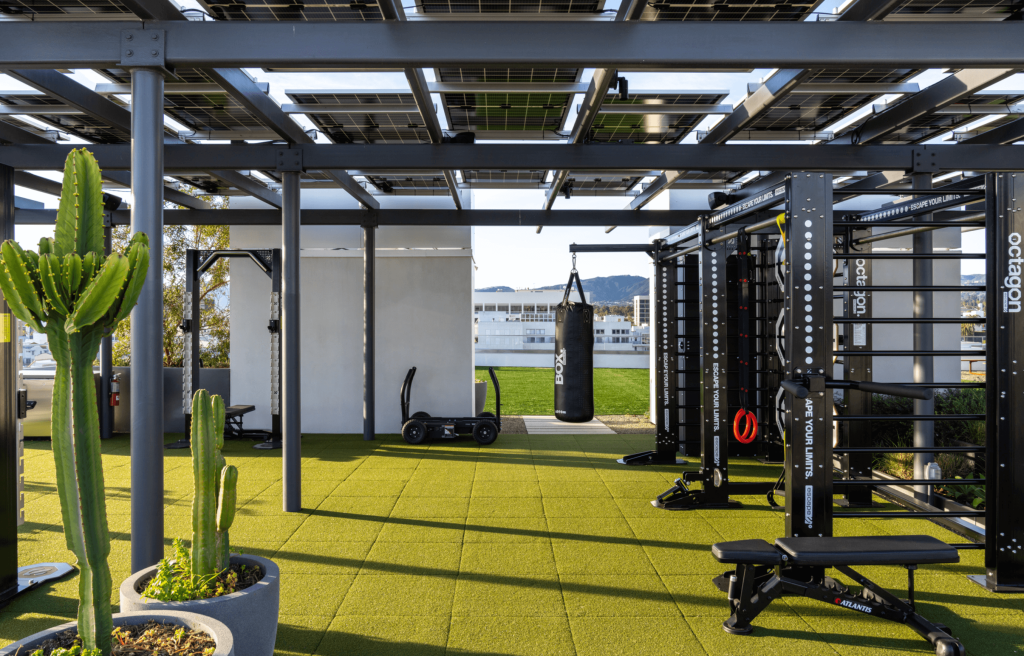

By focusing on these key elements, Opti-Fit helps fitness center owners create spaces that empower members to achieve their fitness goals in a comfortable, efficient, and engaging environment. A strategically designed layout is an investment in member satisfaction and the long-term success of your fitness business.
Ready to optimize your fitness center layout and elevate your member experience? Contact Opti-Fit today for expert design and equipment solutions.
Is your fitness center feeling a little… tired? In the dynamic world of health and wellness, staying fresh and relevant is crucial. A well-executed fitness center revitalization project can breathe new life into your facility, attract new members, retain existing ones, and boost your bottom line. But without careful planning, it can also become a costly headache.
At Opti-fit, we understand the intricacies of designing and implementing fitness facilities. That’s why we’ve put together this ultimate checklist to guide you through your fitness center renovation, helping you avoid common pitfalls and achieve a successful transformation.
1. Define Your Vision & Goals
Before you move a single piece of equipment, clearly articulate why you’re undertaking this revitalization. Are you aiming to:
- Attract a new demographic (e.g., younger members, specific athletic groups)?
- Improve member retention?
- Optimize space utilization?
- Enhance the member programming?
- Integrate new technologies or trending fitness modalities?
Your vision will be the compass guiding every decision, from layout to equipment selection. Don’t just update; innovate with purpose.
2. Conduct a Thorough Assessment
Take a critical look at your current space. What’s working? What’s not? Engage your members with surveys or feedback sessions. Analyze usage data for equipment and areas. Consider:
- Equipment condition and relevance: Is it outdated, frequently breaking down, or failing to meet current member demands?
- Space flow and functionality: Are there bottlenecks? Is natural light maximized?
- Aesthetics: Does the design feel modern, inviting, and on-brand?
- Ancillary services: Are your locker rooms, showers, and common areas up to par?
This assessment provides the data needed to make informed decisions and justify your investments.
3. Budget Wisely & Secure Funding
Revitalization projects can range from minor refreshes to major overhauls. Establish a realistic budget early on, accounting for:
- New equipment purchases and installation
- Flooring, paint, lighting, and other aesthetic upgrades
- Plumbing and electrical work
- Permits and architectural fees
- Contingency funds (always include 10-15% for unforeseen issues!)
- Leasing Possibilities
Explore financing options and potential grants. A detailed budget prevents overspending and ensures your vision is financially viable.
4. Strategic Equipment Selection
This is where your vision truly comes to life. Research the latest fitness trends (HIIT, functional training, virtual classes, recovery zones) and consider what will resonate most with your target audience. Opt for durable, versatile, and user-friendly equipment. Think about variety:
- Cardio: Treadmills, ellipticals, bikes, rowers
- Strength: Free weights, selectorized machines, plate-loaded
- Functional: Rigs, battle ropes, plyo boxes
- Recovery: Massage guns, foam rollers, stretching areas, cold plunges, saunas
Remember to prioritize equipment that offers a strong return on investment and aligns with your facility’s unique selling proposition.
5. Prioritize Member Experience & Ergonomics
A beautiful gym isn’t enough if it’s not functional and comfortable for your members. Consider:
- Layout: Ensure clear pathways, adequate spacing between machines, and logical zoning for different workout types.
- Lighting and ventilation: Create an energizing yet comfortable atmosphere.
- Technology integration: Seamless Wi-Fi, charging stations, smart equipment, and digital signage.
- Sound: Quality sound system and acoustic considerations.
6. Marketing & Grand Re-opening
Don’t wait until the ribbon-cutting to start promoting your revitalized space! Build excitement with sneak peeks, countdowns, and special pre-opening offers for new and returning members. Plan a grand re-opening event to showcase your investment and celebrate with your community.
Ready to Revitalize Your Fitness Center?
Planning a fitness center revitalization can be complex, but with the right strategy, it’s an incredibly rewarding investment. This checklist is just the beginning. For a more in-depth guide, including detailed cost breakdowns, project timelines, and expert insights, download our FREE Ultimate Fitness Center Revitalization Project Checklist.
Have additional questions about your specific fitness center project? Contact Opti-fit today! Our experts are ready to help you plan and execute a successful revitalization that exceeds your expectations.
In the fitness industry, a well-thought-out gym layout is crucial for creating an exceptional member experience. The right layout not only enhances functionality but also influences how members feel and interact within the space. Whether you’re opening a new gym or revamping an existing one, optimizing your layout is essential for fostering a welcoming and efficient environment. A strategically designed gym layout can improve traffic flow, increase member satisfaction, and ultimately boost membership retention.
Incorporating Different Equipment Areas in Your Commercial Gym Design
Creating distinct zones for different types of gym equipment helps streamline the workout process and minimizes confusion among members. By clearly delineating areas for cardio, strength training, and functional fitness, you can cater to the diverse needs of your members while ensuring a smooth and enjoyable workout experience. These designated zones not only enhance the usability of the space but also contribute to a more organized and aesthetically pleasing environment.
Cardio Zone
The cardio zone should be easily accessible and visible, typically placed near the entrance to encourage usage. Ensuring that this area is inviting and well-lit can motivate members to engage in cardiovascular exercises. Equip this zone with a variety of machines like treadmills, ellipticals, and stationary bikes to cater to diverse preferences. Additionally, arranging these machines in rows or semi-circles can create a dynamic and motivating atmosphere.
Strength Training Zone
Separate the strength training area from the cardio zone to avoid overcrowding and noise interference. This zone should include free weights, resistance machines, and functional training equipment. Providing ample space between equipment allows for safe and comfortable movements, reducing the risk of accidents and enhancing the overall workout experience. Consider adding instructional posters or screens to guide members in using the equipment correctly and safely.
Functional Training and Turf Areas
Functional training zones are becoming increasingly popular as more members seek versatile and dynamic workouts. Including a turf area for activities like sled pushes, agility drills, and bodyweight exercises can attract members looking for innovative and engaging fitness routines. Turf areas also add a visually appealing element to your gym, making it stand out and creating a unique identity. These areas can serve as multi-purpose spaces for group classes, personal training sessions, and individual workouts.
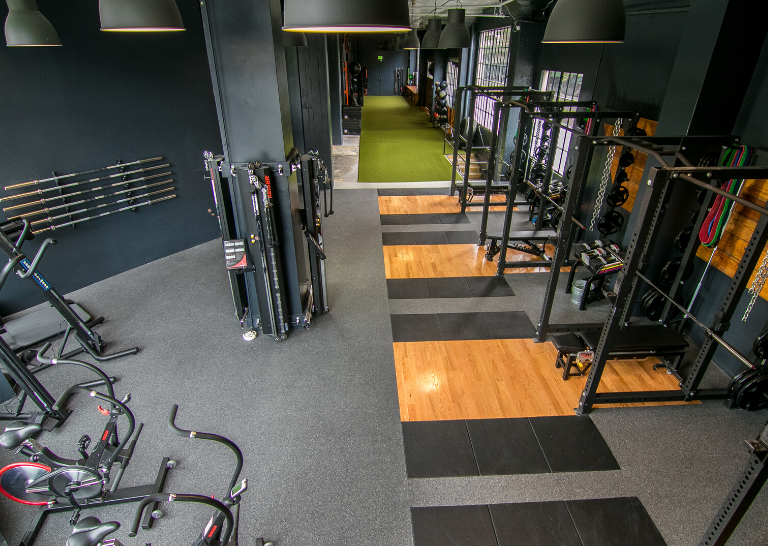
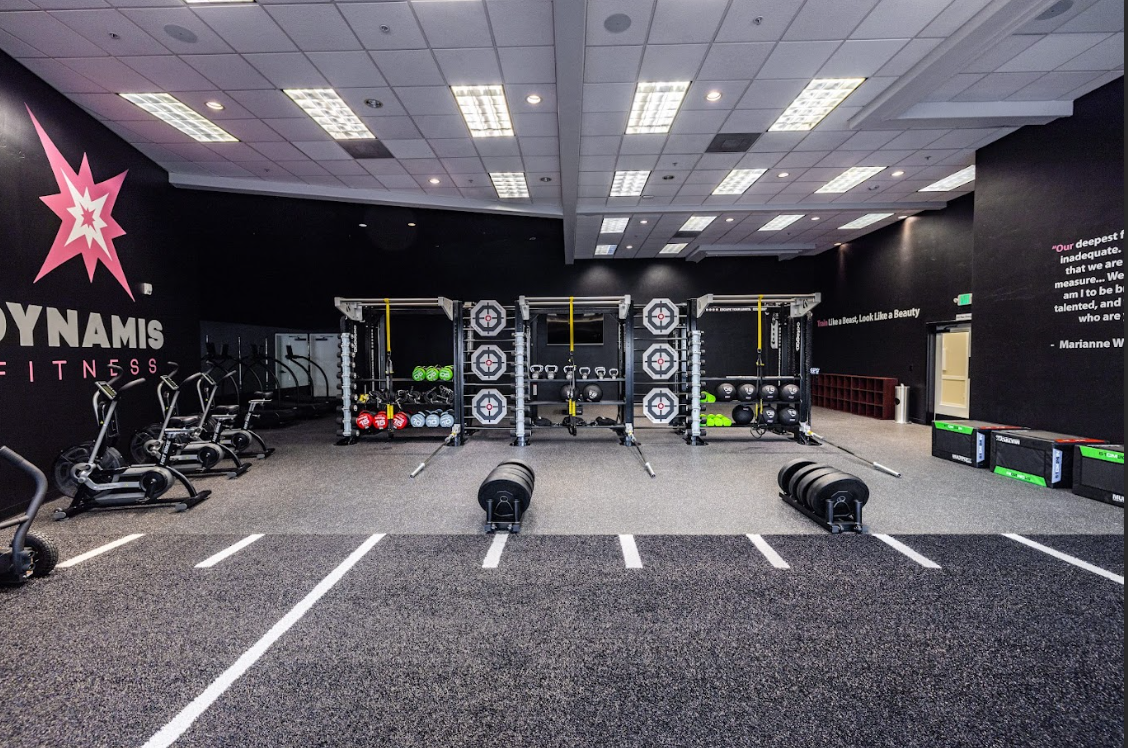
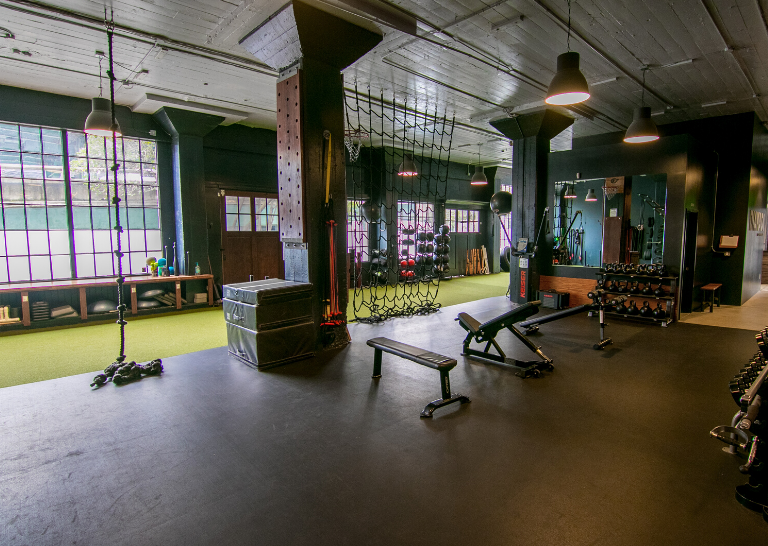
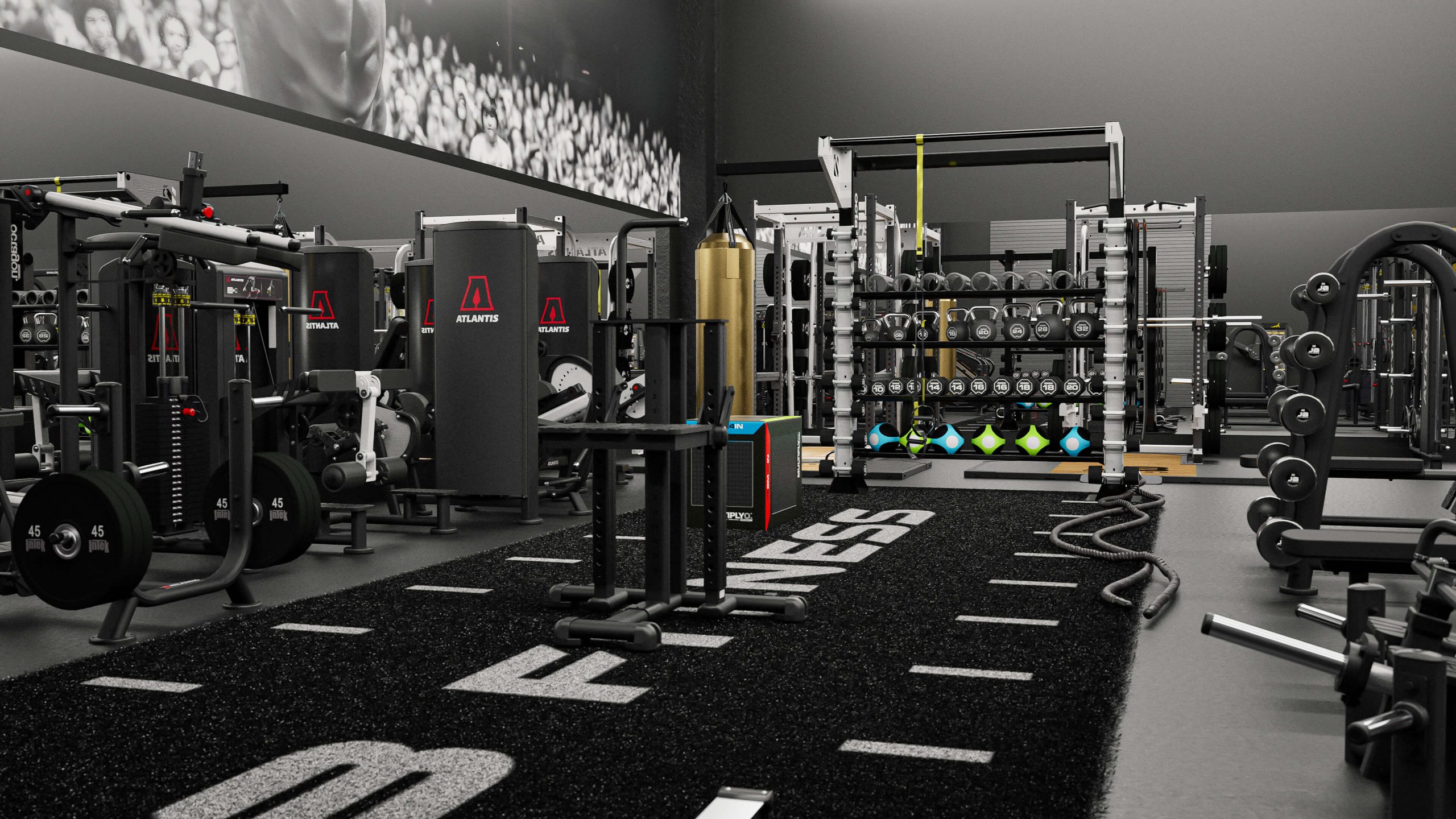
Embracing Interactive Fitness Equipment
The latest trend in the fitness industry is the integration of interactive fitness equipment. Machines that offer virtual classes, real-time feedback, and personalized workout programs can significantly enhance the member experience. Incorporating state-of-the-art technology into your gym not only keeps it up-to-date but also provides members with a cutting-edge fitness experience that can set your facility apart from competitors.
Virtual Training Bikes and Rowers: These allow members to engage in scenic rides and competitive races, providing an immersive and motivating experience. Virtual training options can cater to different fitness levels and preferences, making workouts more enjoyable and effective.
Smart Mirrors: Offering guided workout sessions and performance tracking, smart mirrors can transform any space into a versatile training area. They provide personalized feedback and access to a wide range of classes, from yoga to high-intensity interval training (HIIT).
Connected Strength Equipment: Providing tailored resistance and tracking progress, connected strength equipment helps members achieve their fitness goals more efficiently. These machines can adapt to individual fitness levels and provide detailed performance metrics, enhancing the overall training experience.
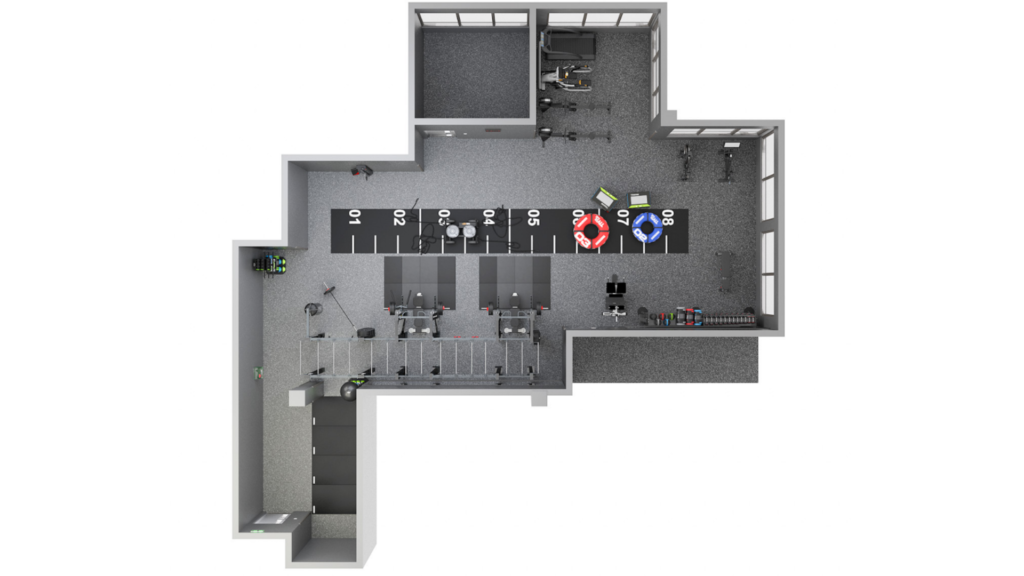
Join Our Newsletter!
Prioritizing Clean and Inviting Member Areas
Maintaining cleanliness and creating inviting spaces is key to member retention. A clean and well-maintained gym environment reflects your commitment to member well-being and can significantly impact their overall experience. Ensuring that locker rooms, restrooms, and common areas are spotless and well-maintained is essential for creating a positive and welcoming atmosphere.
Locker Rooms and Restrooms
Locker rooms should be spacious, well-lit, and equipped with amenities like showers, hairdryers, and secure lockers. Regular cleaning and upkeep are essential to maintain hygiene and member satisfaction. Consider adding thoughtful touches like fresh towels, personal care products, and comfortable seating to enhance the locker room experience.
Common Areas and Lounge Spaces
Design common areas where members can relax, socialize, and recharge. Comfortable seating, charging stations, and access to healthy snacks and beverages can enhance the overall gym experience. These spaces can serve as community hubs where members can connect, share experiences, and build a sense of belonging.
Recovery Solutions
Incorporating recovery solutions like hydromassage, cold plunges, steam rooms and saunas can set your gym apart by addressing the full spectrum of fitness and wellness needs. These amenities not only aid in muscle recovery but also promote relaxation and stress relief, contributing to a comprehensive member experience.
- Hydromassage: Providing hydromassage beds or chairs offers members a convenient way to enjoy the benefits of massage therapy. Hydromassage can help alleviate muscle soreness, reduce stress, and enhance overall relaxation, making it a popular choice for post-workout recovery.
- Cold Plunges: Adding cold plunge pools to your gym can aid in reducing inflammation, improving circulation, and speeding up recovery times. Cold plunges are especially beneficial for athletes and members engaged in intense training regimens, offering a refreshing and rejuvenating experience.
- Saunas and Steam Rooms: Saunas and steam rooms provide numerous health benefits, including detoxification, improved circulation, and muscle relaxation. These facilities can create a spa-like environment within your gym, encouraging members to unwind and rejuvenate after their workouts.
Integrating these recovery solutions into your gym layout not only enhances the member experience but also demonstrates a commitment to their overall health and wellness. By providing comprehensive fitness and recovery options, you can attract a broader range of members and encourage long-term loyalty.
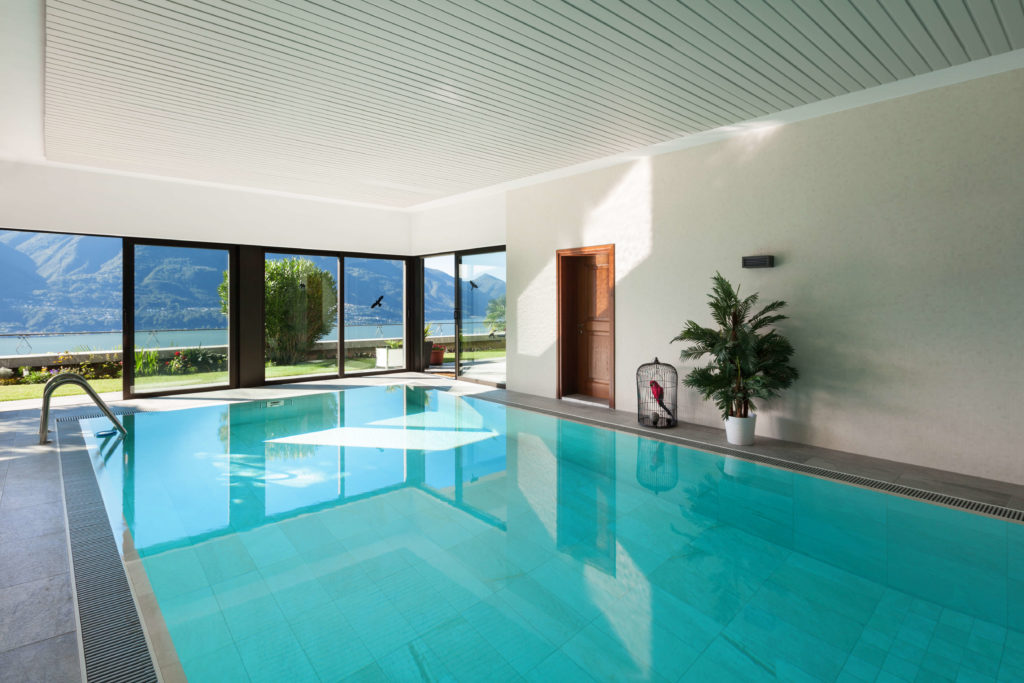
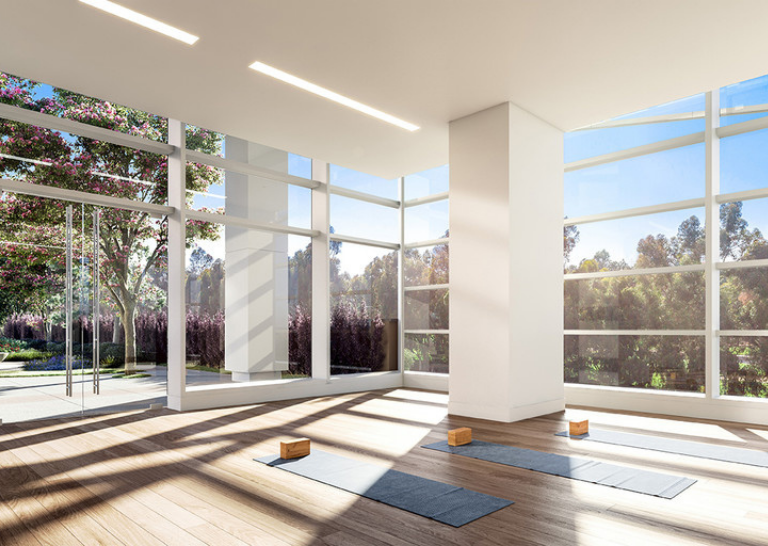

Creating a Seamless Gym Flow with Opti-Fit
A well-optimized layout ensures a seamless flow throughout the gym. Members should be able to move easily from one area to another without congestion. Signage and clear pathways can guide members and reduce confusion. Effective space planning can also help manage peak times and prevent bottlenecks, ensuring a smooth and enjoyable experience for all members.
Optimizing your gym layout is a continuous process that evolves with member needs and industry trends. By incorporating distinct equipment areas, embracing interactive fitness technology, and prioritizing cleanliness and comfort, you can create a space that enhances the member experience and encourages long-term loyalty.
Ready to transform your gym into a member-centric haven? Contact us today to start optimizing your layout and elevate your members’ experience to new heights!
The fitness industry is constantly evolving with new technologies and trends emerging to enhance the workout experience. For gym owners and managers, staying up-to-date with the latest fitness innovations is crucial to keeping members engaged and satisfied. However, with so many options available, deciding on the right equipment can be daunting. Here are five key considerations to keep in mind when purchasing new gym equipment to ensure you make the best investment for your facility.
1. Member Needs and Preferences
Before investing in new equipment, it’s essential to understand the needs and preferences of your members. Conduct surveys, engage in conversations, and observe usage patterns to determine what types of workouts are most popular. For instance, if your members are showing increased interest in high-intensity interval training (HIIT), consider incorporating equipment from brands like Escape Fitness. Their functional training frames are versatile and designed for dynamic workouts. By aligning your equipment purchases with member interests, you can enhance satisfaction and encourage consistent usage.
2. Technological Advancements
The integration of technology in fitness equipment has transformed the workout experience. Interactive and smart equipment can provide personalized workout plans, real-time feedback, and even virtual coaching. Brands like Matrix offer cutting-edge machines with integrated screens that provide immersive workouts, including virtual classes and scenic routes. Additionally, smart strength equipment from Matrix can track performance, adjust resistance automatically, and help users achieve their fitness goals more efficiently. Staying ahead of these technological advancements ensures your gym remains modern and competitive.
3. Space and Layout Considerations
The physical space of your gym plays a significant role in determining what equipment to purchase. Evaluate your current layout and identify areas that can be optimized or repurposed for new equipment. For example, incorporating the modular and adaptable Escape Fitness frames can help you make the most of limited space, offering a variety of training options in a compact footprint. Additionally, upgraded flooring solutions like eCore Flooring can enhance both safety and aesthetics, making your gym more inviting and functional.
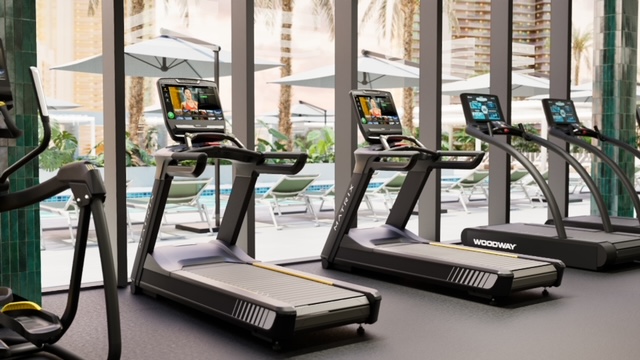
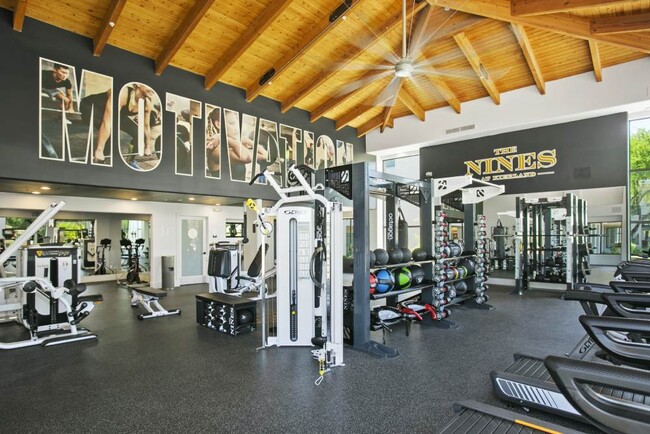
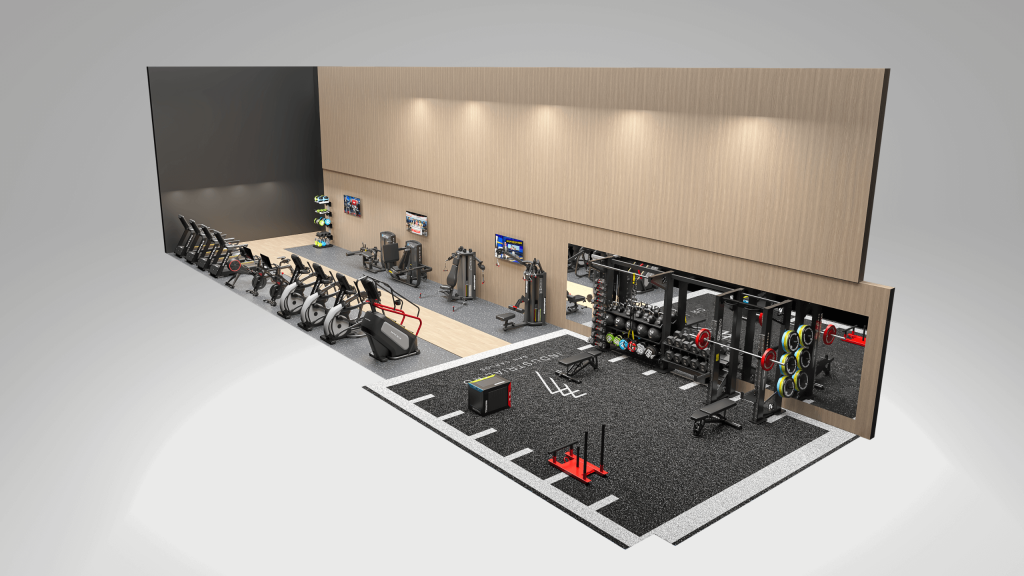

4. Durability and Maintenance
Gym equipment is a significant investment, so it’s important to choose pieces that are durable and require minimal maintenance. Brands known for their reliability, such as Matrix, offer high-quality equipment that is built to last and evolve with your needs. Research the build quality, warranty, and service support of the equipment you’re considering. High-quality equipment may come with a higher upfront cost but can save you money in the long run by reducing repair and replacement expenses. Additionally, consider the ease of maintenance and the availability of replacement parts to ensure your equipment remains in top condition.
5. Cost and Return on Investment (ROI)
While it’s tempting to go for the latest and greatest equipment, it’s crucial to balance cost with expected return on investment. Assess how the new equipment will contribute to member acquisition and retention. Will it attract new members? Will it enhance the experience for existing members and reduce churn? Equipment from reputable brands like Matrix and Escape Fitness can offer long-term value, contributing to a better member experience and potentially higher ROI. Create a budget that considers both the initial purchase price and ongoing operational costs. By evaluating the potential ROI, you can make informed decisions that align with your financial goals.
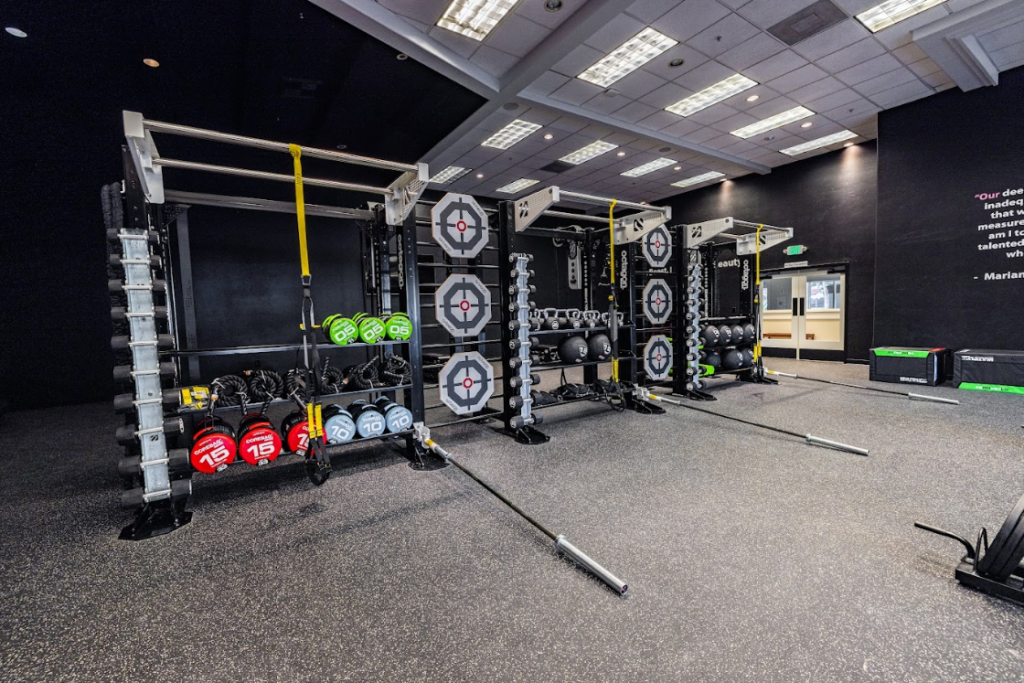
Join Our Newsletter!
Choosing the Right Commercial Gym Equipment with Opti-Fit
Investing in new gym equipment is a significant decision that requires careful consideration. By focusing on member needs, embracing technological advancements, optimizing space, prioritizing durability, and evaluating cost and ROI, you can make strategic purchases that benefit both your gym and its members. Incorporating innovative equipment from trusted brands like Matrix and Escape Fitness, along with upgraded flooring solutions like eCore Flooring, will enhance your facility’s appeal and ensure a thriving, loyal member community.
Ready to upgrade your gym with the latest fitness innovations? Contact Opti-Fit today to explore the best options for your facility and take your member experience to the next level!
When it comes to outfitting a gym—whether it’s a commercial fitness center, a multi-family residential property, a university or school gym, a park and recreational facility, or a boutique studio—choosing the right gym equipment distributor is one of the most critical decisions you’ll make. The right equipment distributor does more than just supply high-quality equipment; they become a strategic partner in your facility’s success. A reputable distributor not only provides state-of-the-art equipment tailored to your specific needs but also offers essential services such as expert consultation, precise equipment installation, and ongoing support. These services ensure that your facility operates smoothly, delivers an exceptional user experience, and stays ahead of the competition. Making an informed choice in this area can elevate the performance and appeal of your gym, ultimately helping you achieve your goals and exceed the expectations of your members.
5 Things to Consider When Choosing a Commercial Gym Equipment Distributor
1. Comprehensive Equipment Selection
A top-tier distributor offers a wide range of gym equipment to suit various fitness needs and preferences. From cardio machines and strength training equipment to functional fitness tools, the selection should cater to different user demographics and fitness goals. The ability to choose from a diverse product line ensures that your facility can meet the expectations of all its members. By working with multiple manufacturers, a distributor like Opti-Fit can source the best equipment across different brands, managing all your shipments and coordinating deliveries to ensure a seamless and hassle-free setup. Opti-Fit takes this a step further by prioritizing quality, biomechanics, and long-term cost when recommending equipment brands and models, ensuring that your investment is both durable and effective.
2. Industry Experience and Reputation
It’s important to consider the longevity, industry experience, and reputation when choosing a gym distributor. A distributor with a strong reputation is likely to have established relationships with top fitness equipment manufacturers, ensuring access to the latest and most reliable products. Opti-Fit partners with only the highest caliber of fitness vendors like Matrix, Atlantis, BeaverFit, Escape, and Elieko, guaranteeing top-quality equipment for your facility. Additionally, a well-known distributor is often recognized for its quality service and customer satisfaction, which can provide peace of mind when making a significant investment in your facility. Researching reviews, testimonials, and case studies can offer valuable insights into the distributor’s track record, helping you make a more informed decision. Remember, a distributor’s reputation is a reflection of their commitment to excellence, and partnering with one that is highly regarded in the industry can lead to better outcomes for your gym and customers.
3. Professional Consultation and Planning
Appeal
A great equipment distributor provides expert consultation services to help you select the right equipment mix for your facility, starting with a deep understanding of your target audience, budget, and space constraints. They assess your facility’s specific needs, considering workout preferences, peak usage times, and user diversity. The distributor strategically plans the layout to maximize space, enhance flow, reduce congestion, and promote safety. For instance, cardio machines might be placed near windows for natural light, while strength training areas are designed with ample space for movement. They also suggest equipment configurations that align with your facility’s goals, whether it’s creating an inviting atmosphere for beginners or a high-intensity environment for advanced athletes. Additionally, a top-tier distributor will offer insights into future-proofing your facility, recommending adaptable equipment that stays relevant. With professional planning, you can create a fitness environment that meets current demands and anticipates future needs, giving you a competitive edge.
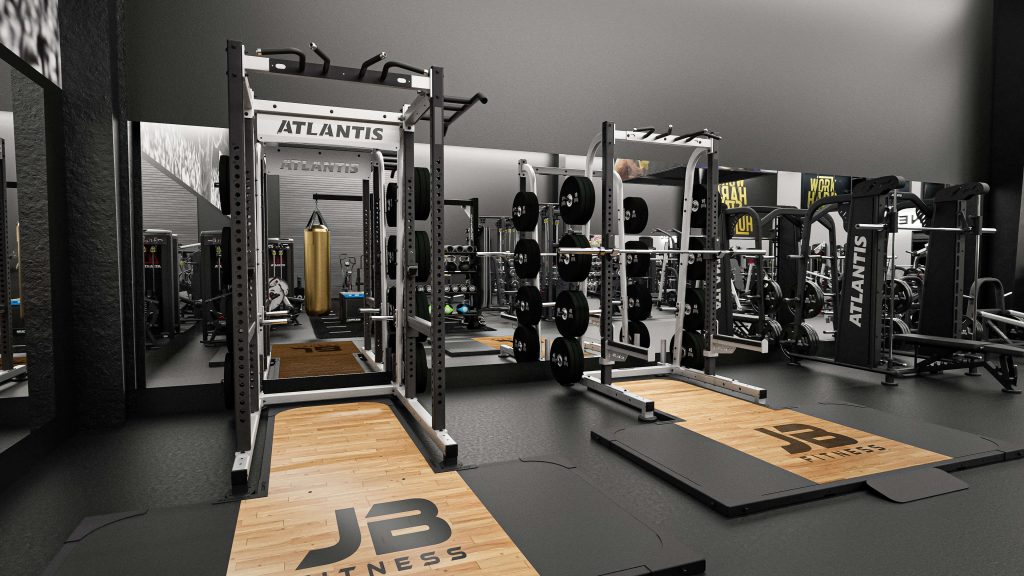
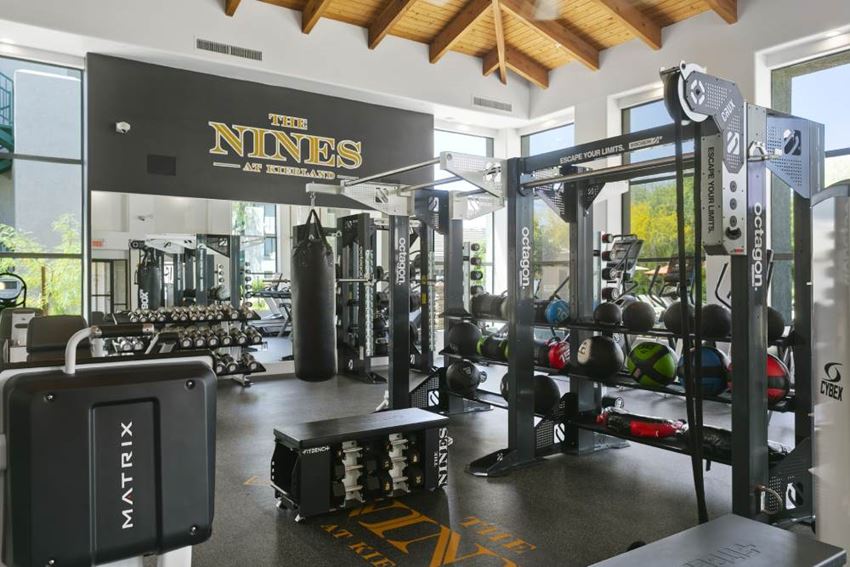
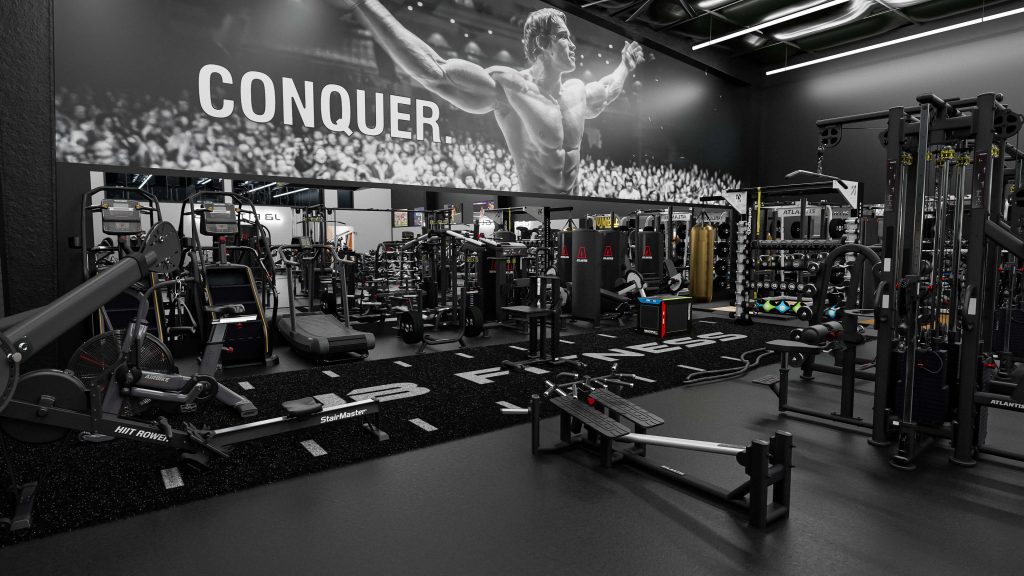

4. Seamless Gym Equipment Installation
Proper installation is key to ensuring safety and functionality, as even the best equipment can be compromised by improper setup. A reputable distributor offers professional installation services that go beyond just assembly and setup; they ensure that every piece of equipment is installed according to manufacturer specifications and industry standards. This meticulous attention to detail minimizes the risk of accidents, equipment malfunctions, and potential liability issues for your facility. Opti-Fit stands out by providing full project management from the initial planning stages through to installation, coordinating every aspect to ensure a smooth and efficient process. Their expertise guarantees that your equipment is not only installed correctly but also positioned optimally for both user convenience and space efficiency. Additionally, Opti-Fit’s commitment to timely delivery and proactive communication throughout the project ensures that there are no unexpected delays or disruptions. This comprehensive approach leads to long-term client satisfaction and a facility that operates seamlessly from day one.
5. Ongoing Maintenance and Support
Working with a reliable distributor means having access to ongoing support and maintenance services. This includes regular equipment inspections, troubleshooting, and repairs. Regular maintenance extends the lifespan of your equipment and ensures that it operates efficiently, providing a safe environment for users.
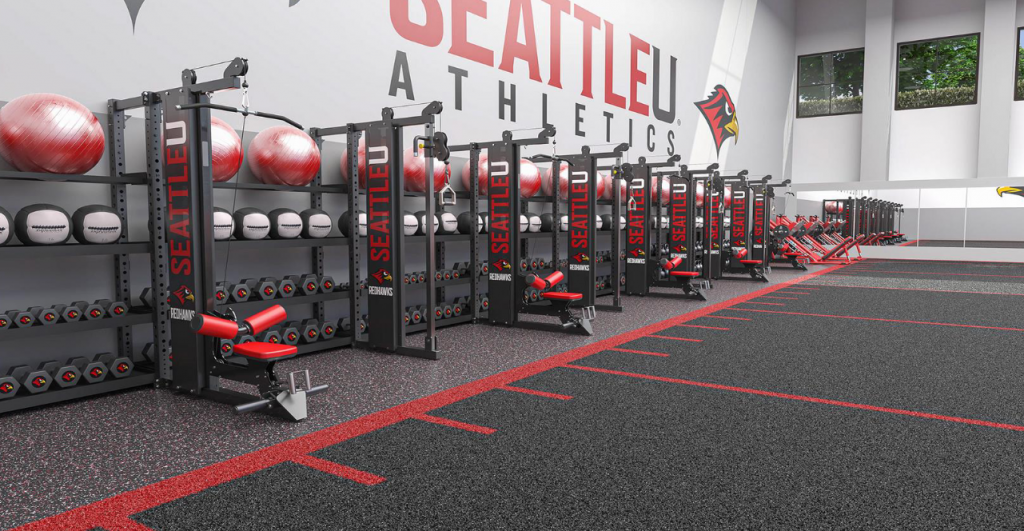
Join Our Newsletter!
Case Studies: Seattle University and Ark Fit
Seattle University recently partnered with Opti-Fit to revamp their campus recreation center. The project involved a complete overhaul of the facility’s equipment, including the installation of state-of-the-art cardio machines, strength equipment, and functional training areas. Opti-Fit provided end-to-end services, from consultation and planning to installation and ongoing support. The result? A modern, versatile space that meets the diverse fitness needs of students and staff.
Similarly, Ark Fit, a boutique fitness studio, worked with Opti-Fit to outfit their space with a unique blend of traditional and innovative fitness equipment. Opti-Fit provided expert guidance on selecting equipment that aligned with Ark Fit’s brand and training philosophy. The seamless installation and continued support have helped Ark Fit maintain a high-quality fitness experience for their clients.
Why Choosing the Right Equipment Distributor Matters
Choosing the right gym equipment distributor can significantly impact the success of your gym. A reliable distributor not only provides quality products but also delivers exceptional service, ensuring that your equipment is installed correctly and maintained over time. This partnership allows you to focus on what matters most: providing an outstanding fitness experience for your members. The right distributor will also offer expert guidance throughout the entire process, from the initial consultation to the final installation, ensuring that every aspect of your facility is optimized for performance and user satisfaction. Whether you’re refreshing an existing facility or starting from scratch with new construction, the right distributor can make all the difference, leading to a facility that stands out in a competitive market and meets the evolving needs of its users.
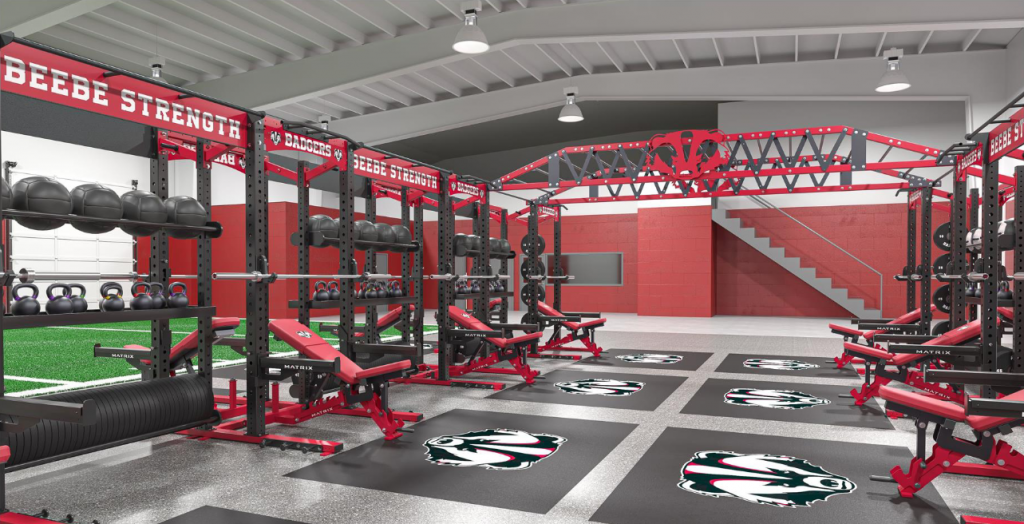
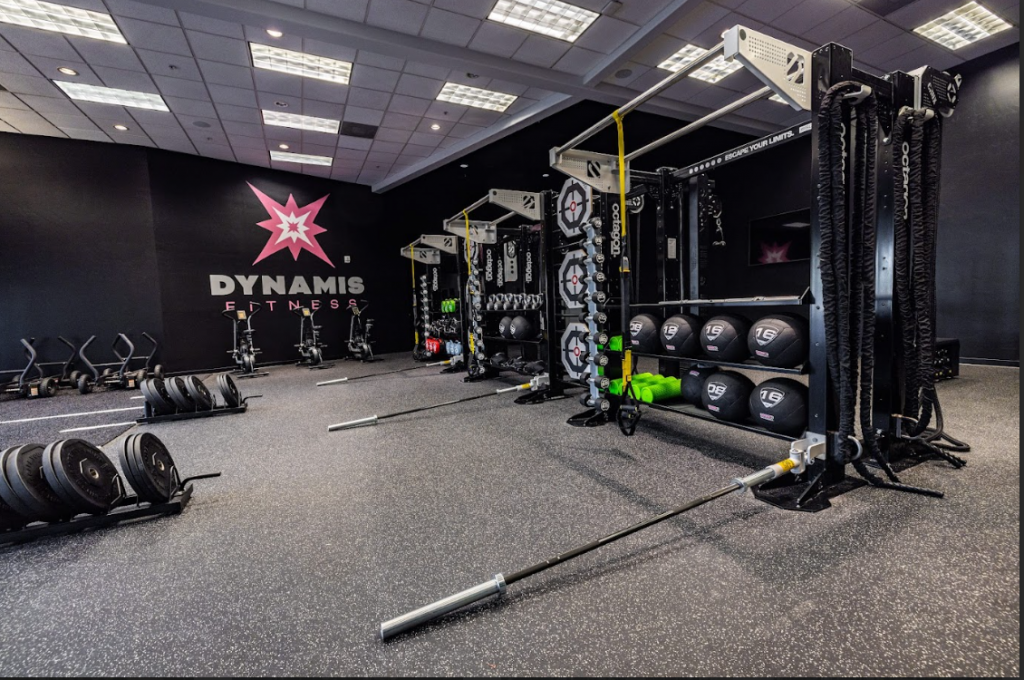
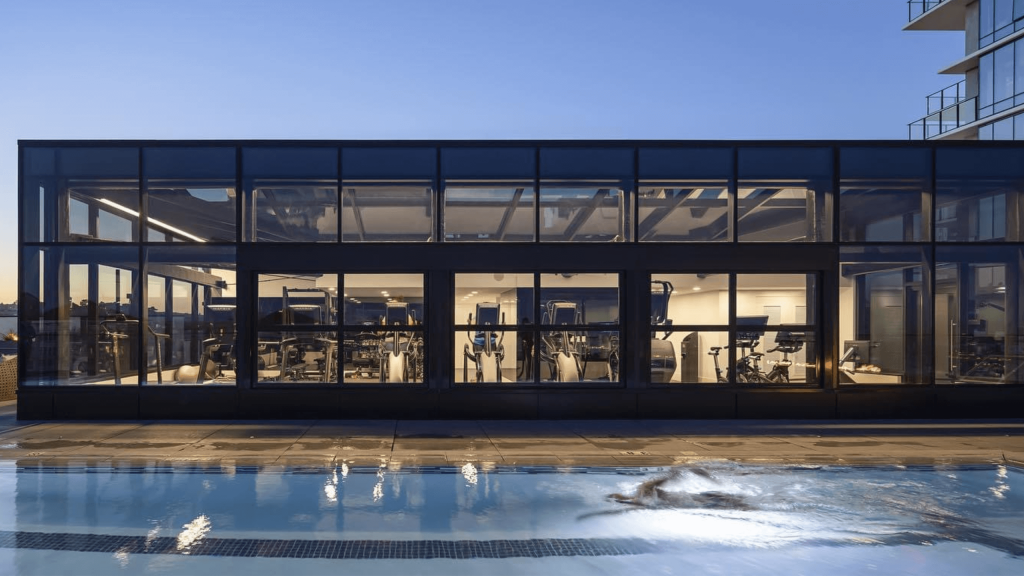
Commercial Gym Equipment by Opti-Fit
When it comes to outfitting your fitness facility, Opti-Fit offers unparalleled expertise and service. As a leading gym equipment distributor, Opti-Fit not only provides access to top-tier brands like Matrix, Atlantis, BeaverFit, Escape, and Elieko, but also offers comprehensive services that go beyond just equipment sales. From expert consultation and strategic facility planning to seamless installation and ongoing support, Opti-Fit ensures that your gym is equipped with the best and most suitable equipment for your specific needs. By partnering with Opti-Fit, you gain a trusted partner who is committed to helping you create a fitness environment that is safe, functional, and tailored to your members’ needs. Whether you’re outfitting a new gym or upgrading an existing one, Opti-Fit’s holistic approach and dedication to customer satisfaction will make all the difference.
For more information on how Opti-Fit can elevate your fitness facility, visit Opti-Fit. Partnering with experienced professionals like Opti-Fit can ensure your gym stands out and delivers an exceptional experience for all users.
Creating the perfect gym environment requires attention to detail, especially when it comes to selecting the right flooring for your fitness facility. Whether you’re outfitting a commercial gym or creating a personal workout space in your home, optimal flooring can enhance safety, improve performance, acoustics, durability, sustainability, and boost the overall aesthetic appeal. At Opti-Fit, we understand the importance of gym flooring and are here to help you tailor your space to your specific needs. We partner with elite flooring companies including Ecore, a leader in innovative flooring solutions, to bring you top-tier options and create the ultimate gym experience.
The Importance of Quality Gym Flooring
Safety First
Safety should always be a top priority in any gym environment. High-quality gym flooring reduces the risk of injuries by providing a stable, non-slip surface that absorbs impact. This is especially crucial in areas with heavy equipment or high foot traffic. Proper flooring can prevent slips, trips, and falls, ensuring that both gym-goers and staff remain safe, also helping reduce the financial risk and liability for owners.
Performance Enhancement
The right flooring can significantly impact athletic performance by providing crucial ergonomic support. Flooring with proper cushioning reduces fatigue and stress on joints, allowing users to work out longer and more effectively. It also offers force reduction and energy restitution, returning positive energy back into the body, which enhances overall performance. Additionally, a supportive floor can reduce pain and fatigue, increase productivity, and lower claims and treatments, helping manage insurance rates in the long run. Tailoring your flooring to the specific activities performed in your gym can enhance the overall experience for users, whether they are engaging in weightlifting, aerobic activities, or any other exercises.
Acoustics
Proper acoustics play a crucial role in the overall experience of your gym facility. Managing impact energy is essential for reducing noise and creating a comfortable environment. When an object, such as a foot or weight, falls, it generates kinetic energy that is distributed in various ways: it bounces back to the object, creates impact sound in the room, transmits sound to adjacent spaces, and converts some energy into heat in the floor.
We choose flooring products that are designed to effectively manage this energy distribution. Our partners at Ecore specialize in flooring that excels at controlling impact sound, both in the room where the object falls and in surrounding areas, including rooms below. This ensures a quieter, more pleasant atmosphere for everyone in your facility.
Aesthetic Appeal
First impressions matter, and the appearance of your gym can attract or deter potential customers. Quality flooring not only looks professional but also conveys a sense of cleanliness and care. Whether you opt for a sleek, modern look or a more rugged, industrial style, the right flooring can complement your gym’s aesthetic and create an inviting atmosphere.
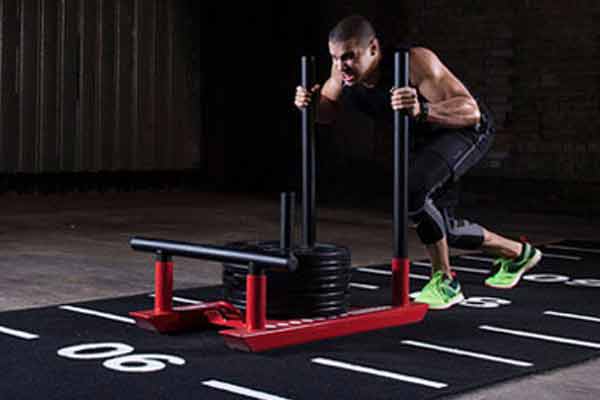
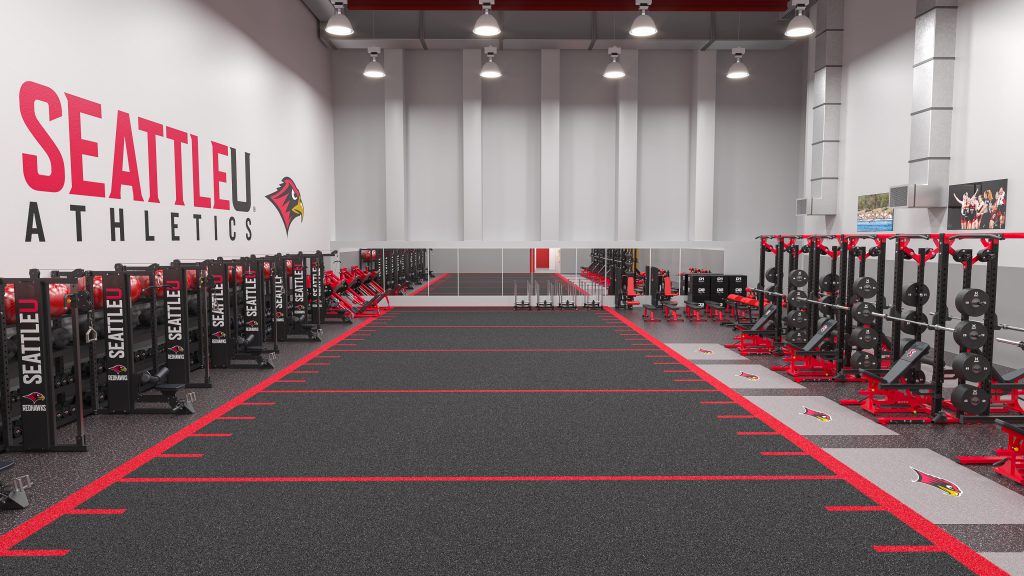
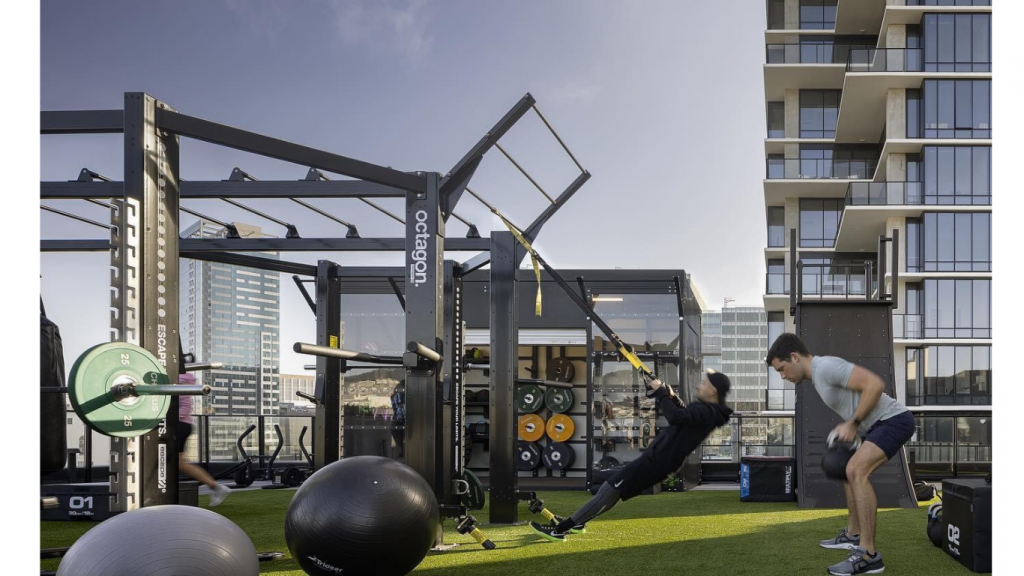
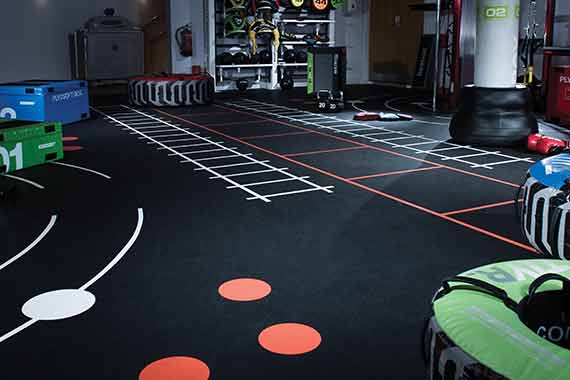
Types of Gym Flooring
Rubber Flooring
Rubber flooring is a versatile and popular choice for gym facilities due to its durability, safety, and performance benefits. Depending on your specific gym needs and budget, there are various types of rubber flooring to consider. One option is composition rubber, which is designed to mitigate scuffing and scratching, provide slip resistance when wet or dry, and offer enhanced force reduction and energy restitution. This type of rubber flooring is porous, making it durable and suitable for high-impact areas.
Another excellent option is calendered rubber, which is created by pouring rubber into a mold and rolling it into sheets to achieve the desired thickness and texture. This manufacturing process makes calendered rubber extremely versatile, ideal for health and wellness, athletic, and fitness spaces. It is particularly beneficial for indoor or outdoor areas that require regular cleaning and sanitizing due to its non-porous surface. Calendered rubber provides superior slip resistance and has a lower friction coefficient, ensuring a higher degree of safety. Its easy maintenance and adaptability make it a practical choice for any facility looking to enhance safety and performance.
Vinyl Flooring
Vinyl flooring offers a sleek and professional look, with the added benefits of durability and easy maintenance. It is resistant to moisture and stains, making it suitable for areas prone to spills or heavy foot traffic. Vinyl flooring is easy to maintain and sanitize, ensuring a hygienic environment in your gym. Additionally, it can mimic the appearance of wood or stone, providing a high-end look without the high-end cost. Vinyl is an excellent choice for those looking for a stylish and practical flooring solution that can withstand the demands of a busy gym facility.
Turf Flooring
Turf flooring is gaining popularity in gyms, particularly for functional training and agility exercises. It provides a natural feel and is gentle on the joints, making it ideal for sprinting, sled pushes, and other high-intensity workouts. Turf floors are slip-resistant to mitigate falls, maintain their form under heavy impacts, and are able to withstand traffic and impact abuse, ensuring long-lasting durability. Turf flooring can be installed indoors or outdoors, adding versatility to your gym space and making it a valuable addition for enhancing both safety and performance in various training environments.

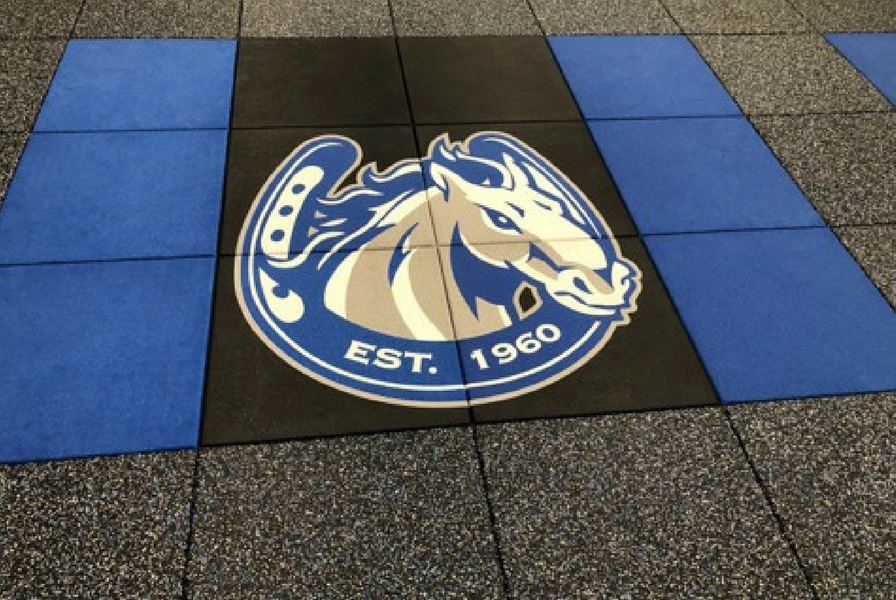
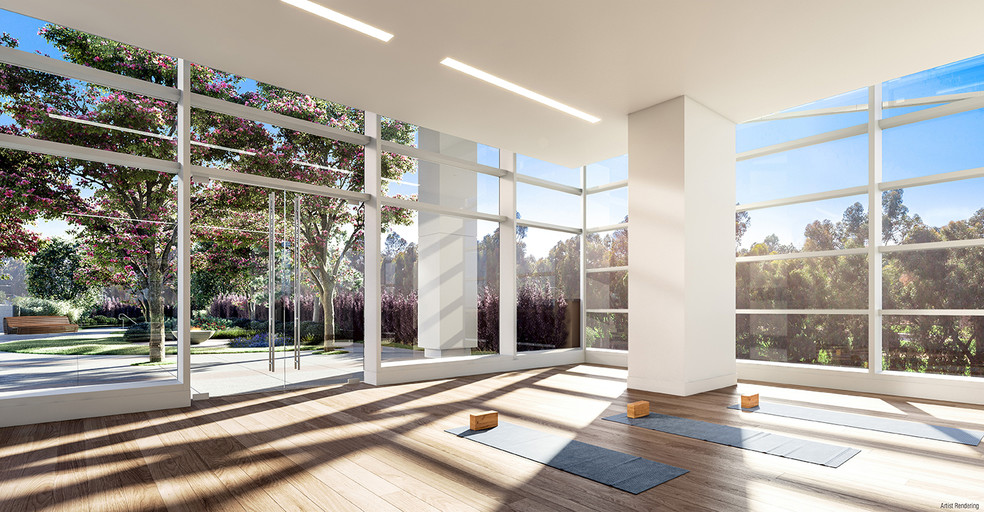
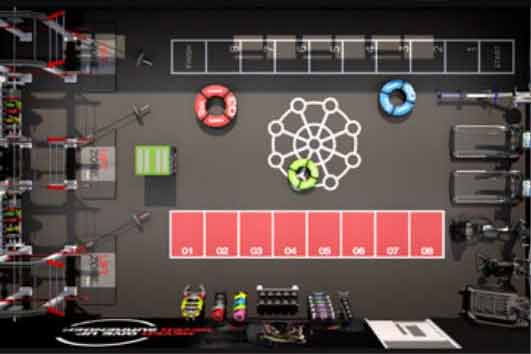
Join Our Newsletter!
Tailoring Your Gym Flooring to Your Needs
Assessing Your Space
Before choosing your gym flooring, it’s essential to assess your space and understand the specific needs of your users. Consider the types of activities that will be performed, the amount of foot traffic, and the overall aesthetic you want to achieve. For example, a commercial gym with heavy equipment may require durable rubber flooring, while a yoga studio might benefit from the comfort of vinyl flooring.
Customization Options
At Opti-Fit, we offer a range of customization options to ensure your gym flooring meets your unique requirements. From custom colors and logos to specific thicknesses and textures, we can help you create a flooring solution that reflects your brand and enhances the user experience. Customization not only improves functionality but also sets your gym apart from the competition.
Professional Installation
Proper installation is critical to the performance and longevity of your gym flooring. Our team of experts at Opti-Fit provides professional installation services to ensure your flooring is installed correctly and efficiently. We take care of every detail, from preparation to finishing touches, so you can focus on running your gym.
Maintenance and Care
Maintaining your gym flooring is essential to keep it looking and performing its best. Different types of flooring require different maintenance routines, but general tips include regular cleaning, prompt spill cleanup, and periodic inspections for wear and tear. At Opti-Fit, we offer maintenance advice and services to help you extend the life of your gym flooring.


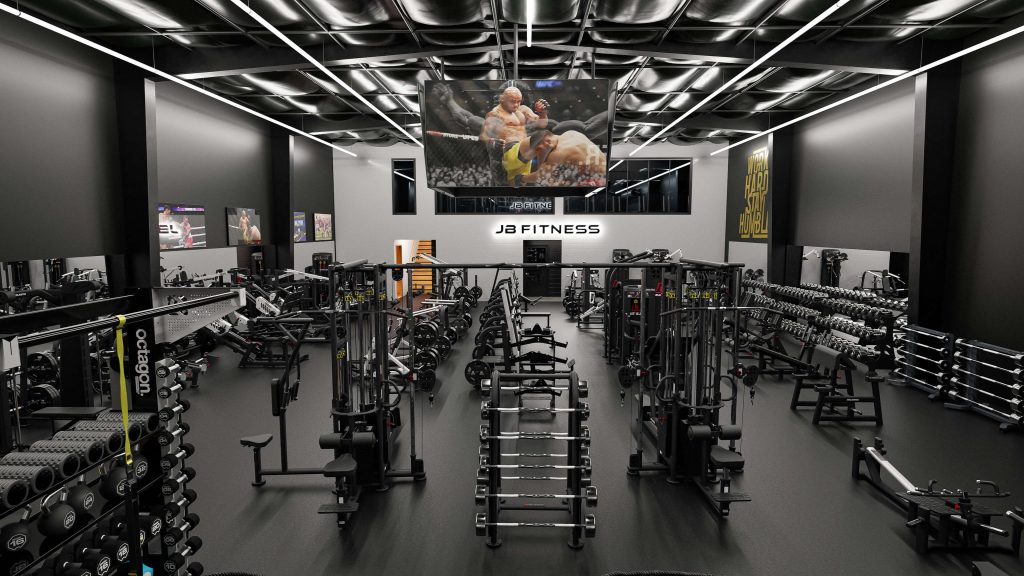
Gym Design Customer Testimonials
Don’t just take our word for it—here’s what some of our satisfied customers have to say about their experience with Opti-Fit and their flooring choice:
“Opti-Fit helped us choose the perfect rubber flooring for our weight room. The installation was seamless, and our members love the new look and feel.” – Mike, Gym Owner
“We needed durable and easy-to-clean flooring for our high-traffic cardio area. Opti-Fit recommended vinyl flooring from Ecore, and it has exceeded our expectations.” – Sarah, Fitness Studio Manager
“The turf flooring from Ecore has transformed our functional training space. It’s comfortable, durable, and looks fantastic.” – John, Personal Trainer
Choose Opti-Fit Gym Flooring Solutions
Investing in quality gym flooring is crucial for creating a safe, functional, and attractive workout environment. Longevity and superior flooring are essential to any gym space. At Opti-Fit, we are committed to helping you tailor your gym to meet your specific needs. From assessing your space and customizing your flooring to professional installation and maintenance, we support you every step of the way.Explore our range of commercial gym flooring options today and discover how we can help you create the perfect gym environment in and beyond California. Explore our portfolio or contact our experts for more information.
For gym owners and fitness managers, creating an inviting and motivating space for members is a top priority. That’s why so many turn to Opti-Fit for their gym design and equipment needs. At Opti-Fit, we are dedicated to creating spaces that are engaging and motivating for both beginners and experienced gymgoers. Let’s discuss how our designs can help optimize your gym space.
Unique Gym Design Solutions
The team at Opti-Fit understands the importance of making your gym space stand out from the competition, which is why our designs come in an array of colors, patterns, sizes, and shapes to fit any aesthetic. We believe in customization; no two gyms should look the same! Our designs are also made with ergonomics in mind—each piece of equipment is designed with comfortability in mind so that users feel comfortable while working out.
We understand that not all gyms have the same budget constraints when it comes to equipping their gyms; that’s why our team can work within any price range to provide the best solutions possible. We never sacrifice quality—no matter what the budget—so you can be sure you’re getting value for your dollar.
Functionality & Safety First
In addition to aesthetics, safety is also a key priority of ours when designing a new gym space or updating existing equipment. All of our designs are tested for safety before they reach your floor—we check for wear-and-tear on pieces such as bolts and screws that could lead to potential accidents or injuries down the road. We also have strict guidelines when it comes to testing our equipment for functionality; each piece must pass rigorous functionality tests before being released into production. This means we can guarantee you will have reliable machines that will last for years to come!
At Opti-Fit, we understand the importance of having a safe, functional, and aesthetically pleasing gym environment that encourages people to stay active and motivated throughout their fitness journey. With our unique design solutions coupled with stringent safety standards, we can create customized spaces tailored specifically towards your individual needs—on any budget! Whether you’re looking to completely overhaul your existing gym or just make some minor improvements here and there—Opti-Fit has got you covered! Contact us today to get started on optimizing your gym space.
The demand for multi-housing buildings is rising as more people seek the convenience and perks that come with apartment buildings. More importantly, residents are on the hunt for apartment communities that improve the quality of their lives. Even with the rise of multi-use home gym equipment, renters want multifamily units with fitness centers. Here are several reasons why developers should include fitness centers in their apartment complexes.
Multi-Housing Units for Health and Wellness
Modern renters are sensitive to their homes and how they influence their wellness. According to the 2020 NMHC/Kingsley Associates Apartment Resident Preferences Report, renters consider three main components- environment, sustainability, and fitness.
In terms of fitness, renters want:
- Pools: 84.6%
- Fitness centers: 83.9%
- Basketball courts: 46.1%
Residents also prefer the following fitness offerings in their fitness centers.
- Exercise machines: 83.9%
- Free weights: 78.7%
- Weight machines: 70.9%
- TRX equipment: 45.0%
- Crossfit equipment: 44.8%
- Yoga: 40.0%
- Fitness classes: 38.8%
High-End Residential Buildings Offer Fitness Center Access
As the demand for high-end apartment communities increases, more developers are including several shared amenities in their designs. An overwhelming 92% of new apartment buildings in 2019 had a fitness facility or gym to meet market demands. In the previous decade, 90% of new apartment buildings had gyms, contributing to more than two-thirds of apartment buildings with fitness facilities.
More apartment renters now prioritize fitness centers and wellness as they select homes. According to a 2017 report by the National Apartment Association, 46% of residents were ready to pay a premium to access fitness classes, while 42% would pay top-dollar for walking trails and tracks.
In response, developers have found ways to upgrade their multi-housing units to attract residents. For example, between 2014 and 2017, 12,574 upgraded or added fitness centers to their units. In addition, 8,492 added swimming pools.
The Cost of Renting a Multi-Housing Unit
Onsite fitness facilities don’t come free or cheap. On average, it costs approximately $1,473 to rent an apartment. However, if the unit comes with a gym, it costs roughly $1,530, a $57 difference. The cost is considerably lower than renting an offsite gym, which can cost at least $10 more per month.
In addition, renters don’t have to incur the cost of movement to and from the gym, which is a relief for gym users that prefer to avoid traffic, driving, and the time spent moving to the gym location.
However, while there are cost and time savings, it’s crucial to consider the gym quality. Some multi-housing units offer basic gyms with cardio and lifting equipment. However, some facilities have the latest smart equipment, fitness trainers, classes, pools, and spas. High-end facilities ultimately cost more.
Fitness Facility Use
Ultimately, one main question for developers and landlords comes into play: will renters use the fitness facilities? Many people often have the intention to exercise, especially when they see a fitness facility on site. However, the intention doesn’t always transfer into behavior.
While developers need to provide fitness facilities for renters, they also have to make it easy for renters to use the facilities. For example, not hiding the fitness facility behind the building is crucial. Instead, the fitness facility should be in an open, easy-to-see, and access location.
The exterior and interior should also be attractive to inspire renters to pay and use the facilities. Naturally, developers will want to keep the costs low but reasonable. One way to do this is to find low maintenance facilities, low-cost to run and attractive to renters.
For example, hot pools and spas consume costly power and require regular cleaning. However, smart gym equipment may be cheaper to operate as long as users can switch them on and off to conserve power.
To learn more about fitness centers in multi-housing complexes, contact an Opti-Fit representative in your area.
The health and fitness club industry is seeing exponential growth across all areas- from the number of fitness facilities to the revenue generated and consumer growth. In a report published by Statistica, the global health and fitness club industry was worth over $ 87 billion in 2017, up from $67 billion in 2009. Similarly, the number of fitness center memberships will continue rising. This upward trajectory is set to carry on as more consumers place value on their well-being, which means fitness investments will keep booming. However, facilities designed with the user in mind will enjoy a larger market share and client satisfaction and retention.
Investing in a professional design before setting up your fitness facility is one of the most effective ways to ensure high usage and efficient traffic flow. Read ahead to learn exactly how a great design contributes to the success of your fitness facility.
Visualize your project in 2D and 3D
Creating an ideal fitness training space requires you to work with professionals who can turn your vision into reality. It all starts with creating top-down 2D and 3D designs that simulate your complete project. This allows you to visualize how the facility will look like before embarking on the actual construction and equipment ordering. At this stage, you can redesign or make changes to the existing layout until it meets your requirements. With high-quality 2D and 3D designs in place, you’ll have an easier time executing your plan.
Use space efficiently and improve client flow
It is vital for fitness facilities to maintain a clear, well-structured, and organized space. Professional design ensures proper use of space such that users are comfortable and have plenty of room for training. In an ideal design, all unnecessary items such as cupboards are moved to provide more floor space. The available space is then creatively used for essentials such as storage and wipes, water coolers, weight racks, and other vital accessories and equipment.
Good designs also take into account how typical workout routines function. With this in mind, you can arrange training equipment and accessories in a way that facilitates most activities, thus making it easier for users to move through their workout sessions. The bottom line is setting up the facility in a way that feels less cluttered so that users can freely move around while avoiding lines forming at certain equipment.
Determine where to place equipment
Getting the most out of your available space is all about considering how the facility’s design impacts user experience. For this reason, ease of use and accessibility should always be the hallmark when laying out the equipment. A good idea would be categorizing equipment by type – such that specific sections of the facility are dedicated to weightlifting, cardio exercising, group training, mobility/stretching, or any other kind of workout. It makes sense if all cardio machines are placed together or if dumbbells are kept close to the free weight machines. This demonstrates how investing in a professional design for your project can help create the ideal training environment- safe, comfortable, high-performing, and motivating.
Electrical and WiFi needs
Modern fitness facilities have now stepped up their game from the traditional “warehouse feel” to designing for user satisfaction. One such trend is the increased adoption of self-powered training equipment, which is great for the logistics and overall safety of the users. Despite these advancements, electrical needs are still required in most fitness centers. While most gym owners tend to overlook this point in their planning stage, a professional design will take into account all mechanical, electrical, and internetrequirements. This includes planning power outlets for your training equipment, WiFi, visuals, audio, and any other accessories that require power within the facility.
Is your equipment meeting ADA requirements?
A fundamental requirement for all fitness training centers is to remove all barriers that may limit accessibility by people with disabilities. ADA compliance in a fitness facility covers all structural domains like parking, exterior entrances, elevators, doors, bathrooms, locker rooms, customer service desk, accessibility around training equipment, and all building accessories. Professional designs take into account ADA guidelines and standards for fitness facilities pertaining to equipment set-up and installation. Adhering to these regulations is a way of helping safeguarding your facility against future liability.
Summing it up
Investing in a professional design will have much positive impact on your fitness facility. If people are satisfied with the space they are in, there’s a much better chance for them to stick to their exercise routines. This will lead to the advancement of the facility’s overall status and higher client retention, thus helping your business achieve continuous growth and success.
In days of yore, all you needed to amp up your fitness was a wooly mammoth to run away from. Exercise was a part of daily life for hunters and gatherers, so hominids didn’t need kettlebells to carve out their abs. Nor did the Ancient Greeks—they acquired their biceps in the military centuries before the first book about physical pursuits was written by Cristobel Mendez. The fitness industry as we know it today began when a muscle-bound guru named Macfadden invented the first wall-mounted “muscle developers.” In the disco era, jogging and jazzercise were trends du jour. If the burgeoning gym sector could make exercise fun, surely the entire world would join the dance party. Exercise trends are wont to pass, so as the Nineties dawned in all their pleather splendor, fitness centers were revolutionized yet again.
Training in the Eighties
Stair masters, elliptical cross trainers, and exercise bikes targeted muscle groups with razor-like precision. In those days, aerobic fitness and strength training were divided by a giant fitness center wall, and ne’er the two could meet. The approach was as inefficient as it was time-consuming, and gym brands only muddied the waters by designing increasingly complicated machines. If an exercise machine could play movies, count burned calories, and butter your morning toast, the industry sold it.
With time comes education. The more scientific understanding the fitness industry has gained, the better it’s become at toning wobbly bodies. Before 2010 dawned, centers focused on five areas:
- Obesity management
- Fitness for aging baby boomers
- Functional fitness that prepared the body for everyday activities
- Core training
These approaches were supposed to be a shortcut to larger muscles, but as the years progressed, scientists discovered that short, intense bouts of movement could target both long and short-term endurance. Fitness fiends could cut their workouts in half without suffering any negative effects. High-intensity interval training (HIIT) revolutionized the modern-day fitness center. Even Olympic athletes were doing it. Studies show that high intensity bursts increased power output by almost 10% while improving movement efficiency.
As HIIT entered public consciousness, the industry sought out inventive ways to pack power into their workouts. Wearable technology was an obvious solution. Tabata training followed closely behind, so pylo boxes became a requisite inclusion in every athletic training center. Pylo power caught on fast, giving trainers the variety they needed to tone their bodies holistically. Add body weights, box jumps, and split squats, and you’re well on your way to fitness freedom. Pylometric boxes turn the body into a weight, allowing trainers to combine aerobic and strength training in a higher intensity workout. The higher the equipment, the harsher the training. The simplicity of it is elegant, but you can’t achieve stability with a pylo box alone.
The Emergence of the Athletic Training
Unlike Jazzercise, HIIT couldn’t be limited to one room at the back of the gym. It required too much space and had too many enthusiasts for that, so the fitness center of yesteryear transformed into an athletic training center replete with high-tech flooring and every pylo box design you could dream up. The sheer intensity of HIIT demanded a new approach to turf. Non-slip surfaces aren’t enough because the design of the surface determines the kind of strength and endurance achieved. Pylometric training on a firm surface reduces muscle soreness and even damage, but accidents must be reduced as well. Today’s centers must improve explosive power via the most effective surface, and a gym mat simply won’t do anymore. Opti-Fit approaches HIIT as an artform, carrying fitness into a distant future years ahead of its time.
For more information on designing todays fitness centers, contact one of Opti-Fit’s fitness professionals.
